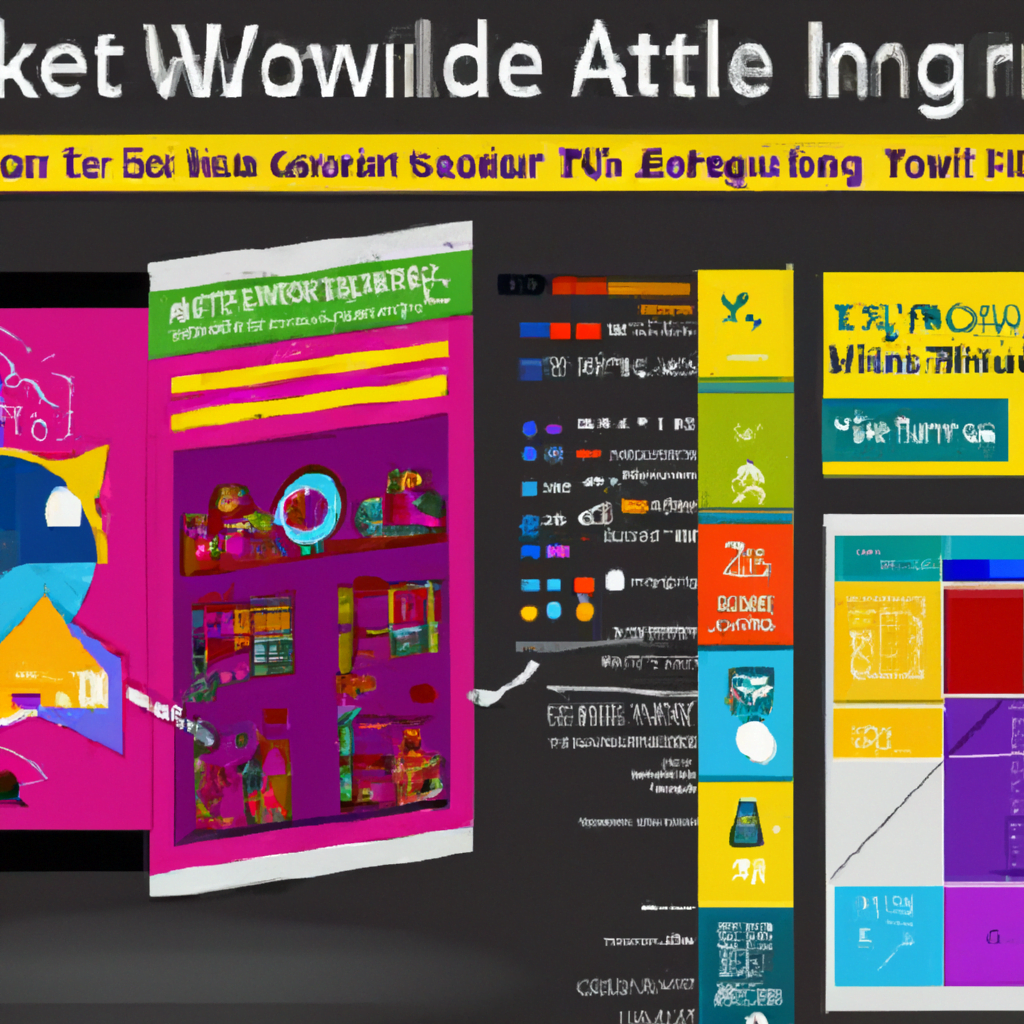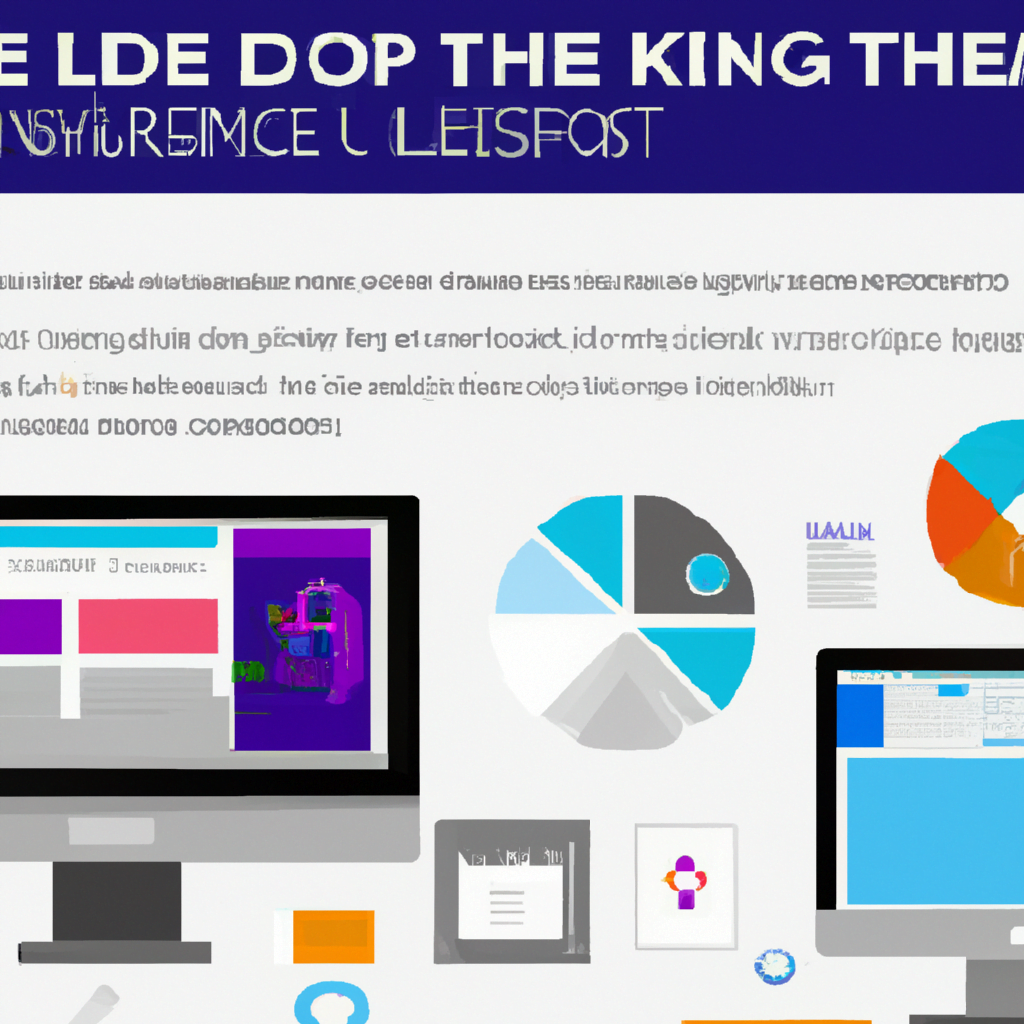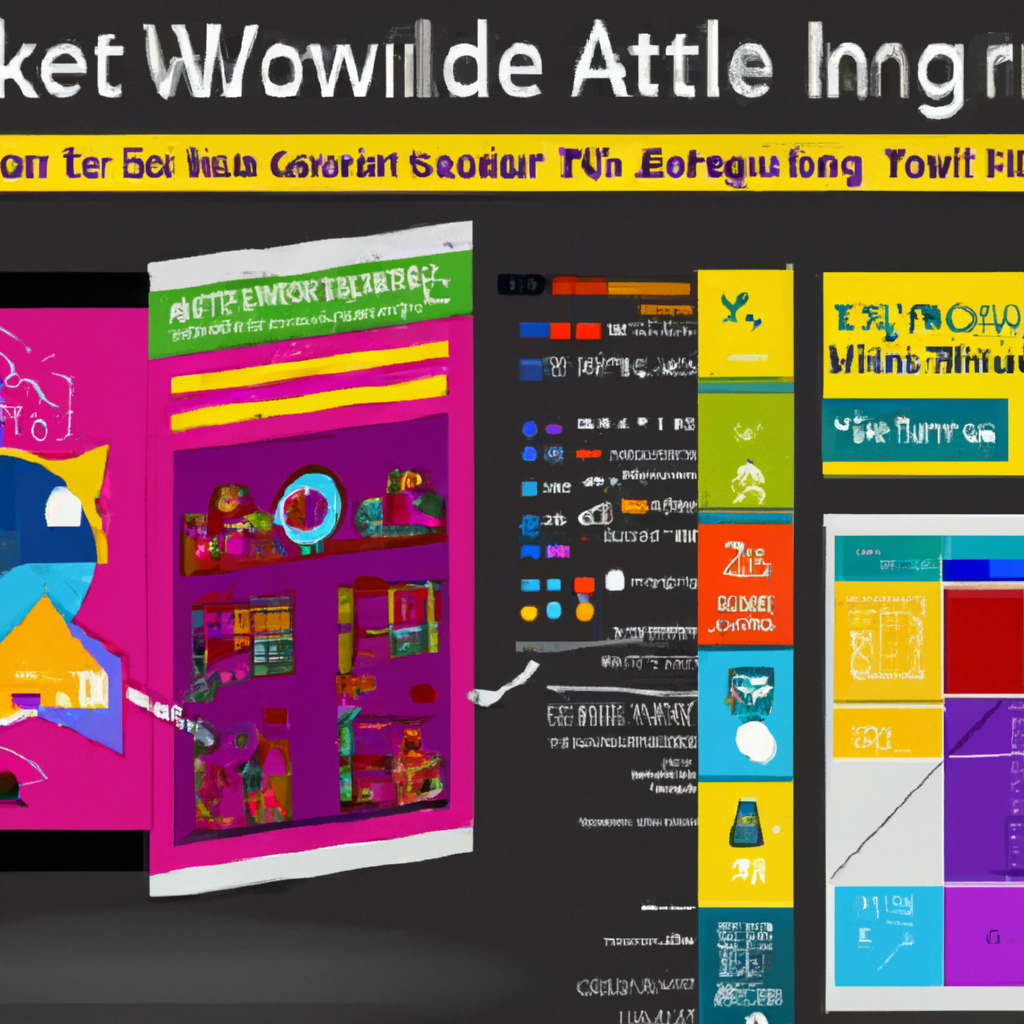If you’re looking to create eye-catching and informative infographics, then learning how to design them using Illustrator is a must. Infographics are a powerful tool for presenting complex information in a visually appealing and easily understandable way. In this article, we will explore the techniques and principles that will help you seamlessly integrate text, images, and visuals to create captivating infographics. From choosing the right color palette to arranging elements in a visually balanced manner, you’ll discover the step-by-step process of designing engaging infographics using Illustrator. So, let’s dive in and unleash your creativity in the world of infographic design!

Understanding Infographics
What are infographics?
Infographics are visual representations of information, data, or knowledge that are designed to convey complex concepts in a simple and concise way. They use a combination of images, icons, charts, graphs, and text to present information in a visually appealing and easily understandable format.
Why are infographics important?
Infographics have become increasingly popular in recent years due to their ability to effectively communicate information in a visual manner. They provide an engaging way to present data and statistics, making it easier for people to grasp and retain information. Infographics are also highly shareable on social media platforms, helping to increase brand awareness and drive traffic to websites.
Types of infographics
There are various types of infographics that can be used depending on the purpose and content being presented. Some common types include:
- Statistical infographics: These infographics are used to display numerical data and statistics, such as graphs, charts, and diagrams.
- Timeline infographics: These infographics are used to present a series of events or a chronological sequence, often in a linear format.
- Process infographics: These infographics are used to explain a process or step-by-step instructions, using visuals to guide the viewer.
- Comparison infographics: These infographics are used to compare two or more items or concepts, showcasing similarities and differences.
- Geographic infographics: These infographics are used to represent data or information specific to a certain location or region, often through maps or charts.
Getting Started with Illustrator
Introduction to Adobe Illustrator
Adobe Illustrator is a powerful graphic design software that is widely used for creating illustrations, logos, icons, and infographics. It provides a range of tools and features that allow designers to create vector-based graphics, which can be scaled and resized without losing quality.
Setting up the workspace
Before starting to design an infographic, it is important to set up the Illustrator workspace to suit your needs. This includes customizing the layout, arranging panels, and selecting the appropriate tools for your project. By organizing your workspace effectively, you can streamline your workflow and work more efficiently.
Tools and panels overview
Illustrator offers a wide range of tools and panels that can be used to create and modify your infographic designs. Some important tools for infographic design include the Pen Tool, Selection Tool, Text Tool, and Shape Tools. Panels such as the Layers Panel, Color Panel, and Pathfinder Panel are also essential for managing and editing your artwork.
Planning Your Infographic
Defining your purpose and audience
Before diving into the design process, it is important to clearly define the purpose of your infographic and identify your target audience. Understanding the goals and objectives of your infographic will help you make informed design decisions and ensure that your message is effectively communicated to your intended audience.
Determining key messages
Once you have defined your purpose, it is important to determine the key messages that you want to convey through your infographic. These key messages should be focused and concise, capturing the most important information or insights that you want to communicate to your audience.
Gathering data and content
Infographics are typically data-driven, so gathering relevant data is a crucial step in the design process. This can involve conducting research, collecting statistics, or analyzing existing data sources. In addition to data, you will also need to gather supporting content such as images, icons, and text that will be used to enhance your infographic design.

Choosing the Right Visual Elements
Selecting appropriate icons and illustrations
Icons and illustrations are integral to infographic design, as they help to visually represent concepts and ideas. When selecting icons and illustrations, it is important to choose visuals that are relevant to your content and easy to understand. High-quality vector-based icons and illustrations are ideal, as they can be easily resized and customized within Illustrator.
Utilizing charts and graphs
Charts and graphs are effective visual tools for presenting numerical data in an infographic. Illustrator offers a range of options for creating charts and graphs, allowing you to customize the design and style to match your overall infographic aesthetic. It is important to choose the most appropriate type of chart or graph that effectively represents your data and is easy for the audience to interpret.
Using typography effectively
Typography plays a crucial role in infographic design, as it helps to guide the audience and highlight key information. When using typography in your infographic, it is important to consider legibility, hierarchy, and consistency. Choose fonts that are easy to read at various sizes, and use font styles, sizes, and colors to differentiate between different levels of information.
Creating a Grid System
Importance of grids in infographic design
Grids are fundamental to creating well-organized and visually pleasing infographic designs. They provide a framework for aligning and arranging elements, ensuring that the design remains consistent and balanced. Grids also help to create visual hierarchy and improve readability in the infographic.
Grid creation techniques
There are various techniques for creating grids in Illustrator, depending on your design preferences. You can use the built-in grid tools in Illustrator to create a basic grid structure, or you can manually create a grid using guides and alignment tools. Experiment with different grid layouts to find the one that works best for your infographic design.
Aligning elements to the grid
Once you have established a grid, it is important to align and arrange your infographic elements to fit within the grid structure. This will help maintain consistency and balance in your design. Use the alignment tools in Illustrator to easily align and distribute elements along the grid lines.
Designing the Layout
Balancing visual hierarchy
Visual hierarchy refers to the arrangement of elements in a design to guide the viewer’s attention and emphasize important information. In infographic design, it is important to create a clear visual hierarchy by using size, color, contrast, and placement. Place your most important information or key messages in the most prominent areas of your design to ensure they are noticed by your audience.
Organizing information
Organizing information in an infographic is crucial to ensure that it is easily understood and digestible. Group related information together and use visual cues such as headings, subheadings, and bullet points to help structure and organize your content. Be mindful of the flow of information and consider the most logical and intuitive order for presenting your content.
Arranging elements for readability
Readability is a key consideration when arranging elements in an infographic. Ensure that text is legible by using appropriate fonts, sizes, and line spacing. Leave sufficient white space between elements to improve readability and prevent your design from feeling cluttered. Consider the placement and orientation of elements to optimize readability and visual flow.
Adding Colors and Visual Style
Understanding color theory
Color theory is an important aspect of infographic design, as colors can evoke emotions, convey meaning, and enhance the overall visual impact of your design. Familiarize yourself with basic color principles such as color harmony, contrast, and the psychology of colors to effectively apply colors in your infographic design.
Choosing a color scheme
When choosing a color scheme for your infographic, consider your purpose, audience, and branding guidelines. Select colors that are visually appealing, complement each other well, and align with the overall message and tone of your design. Use color sparingly and strategically to highlight important information and create visual interest.
Applying consistent visual style
Maintaining a consistent visual style throughout your infographic is crucial for creating a cohesive and professional design. Use a consistent color palette, typography, and design elements throughout your infographic to ensure visual unity. Avoid using too many different styles or visual effects that can distract from the main message of your design.
Using Illustrator Tools and Techniques
Creating custom shapes and icons
Illustrator provides a range of tools and techniques for creating custom shapes and icons to enhance your infographic design. Use the Shape Tools, Pen Tool, and Pathfinder Panel to create unique shapes and icons that are tailored to your infographic content. Experiment with different shapes and styles to add visual interest to your design.
Working with layers
Using layers in Illustrator can help you organize and manage the different elements of your infographic design. Create separate layers for text, icons, illustrations, and background elements, making it easier to edit and adjust individual components. Arrange the layers in a logical order to ensure that elements are easily accessible and can be modified independently.
Applying effects and filters
Illustrator offers a wide range of effects and filters that can be applied to elements in your infographic design. These effects, such as drop shadows, gradients, and glows, can add depth and dimension to your design. However, it is important to use these effects sparingly and tastefully to avoid overwhelming the overall design.
Working with Text
Formatting text
Formatting text in an infographic is essential for creating visual hierarchy and improving readability. Experiment with different font styles, sizes, and colors to differentiate between headings, subheadings, and body text. Ensure that text is aligned properly and properly spaced to enhance readability.
Hierarchy and readability
Establishing a clear hierarchy within your text is important to guide the reader’s attention and emphasize important information. Use font styles, sizes, and colors to differentiate between different levels of information, making sure that the most important information stands out. Break large blocks of text into smaller, more digestible chunks to improve readability.
Creating text paths and effects
Text paths and effects can add visual interest and creativity to your infographic design. Create text paths using the Pen Tool and customize the shape and curve of the paths to fit your design. Apply effects such as warping, distortion, or 3D effects to text to create unique and eye-catching typography.
Exporting and Publishing Infographics
Optimizing file formats for web and print
When exporting your infographic for web or print, it is important to choose the appropriate file format. For web, JPEG or PNG formats are commonly used, while for print, PDF or EPS formats are preferred. Ensure that your resolution and image quality settings are suitable for the intended output to maintain the visual integrity of your design.
Exporting high-resolution images
To ensure that your infographic retains its quality when scaled or printed, export high-resolution images from Illustrator. Set your resolution to at least 300 DPI (dots per inch) to ensure sharp and crisp images. Consider the dimensions and aspect ratio of your infographic when exporting to ensure that it can be viewed properly on different platforms and devices.
Sharing and distributing infographics
Once your infographic is ready, it’s time to share and distribute it to your intended audience. Consider the most appropriate channels for sharing, such as social media platforms, websites, or email newsletters. Add relevant meta tags, descriptions, and hashtags to optimize your infographic for search engines and increase its visibility.
In conclusion, designing infographics using Adobe Illustrator requires a combination of creativity, data analysis, and technical skills. By understanding the principles and techniques discussed in this article, you can create visually compelling and informative infographics that effectively communicate your message to your audience. Remember to plan your infographic carefully, choose the right visual elements, design an effective layout, and apply colors and typography strategically. Utilize Illustrator’s tools and techniques to create custom shapes and icons, work with layers, and apply effects. Finally, export and publish your infographic in the appropriate file format, optimize it for web or print, and share it through various channels to maximize its impact. With practice and experimentation, you can become proficient in designing infographics that engage and resonate with your audience.

